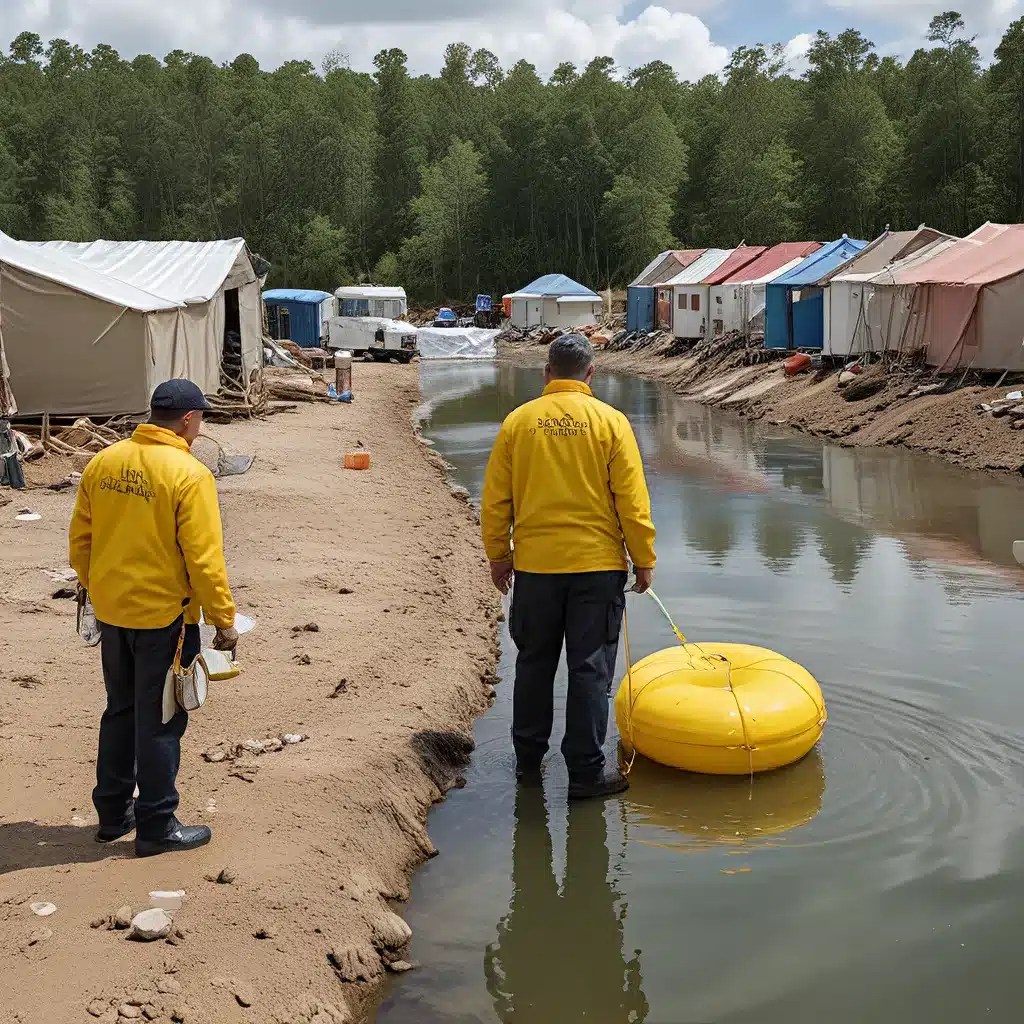
Quenching Thirsts, Saving Lives: The Water Treatment Tech Revolutionizing Disaster Response
These days, when I think about disasters and emergencies, one thing stands out: the crucial role of clean, accessible water. It’s not just a matter of hydration – it’s a matter of life and death. That’s why I’m excited to dive into the incredible advancements in water treatment technology that are transforming the way we respond to crises around the world.
Dirty Water, Deadly Consequences
Picture this: you’re in the midst of a natural disaster, surrounded by floodwaters or debris-filled streams. Your immediate needs are shelter, food, and… water. But the water all around you is contaminated and unfit for consumption. Drinking it could make you seriously ill – or even kill you.
This nightmare scenario is all too real for many communities impacted by disasters. Flooding, earthquakes, and other catastrophic events can disrupt the normal water supply, leaving people without access to the safe, clean water they desperately need. And the consequences can be catastrophic. Choking on contaminated water is a leading cause of unintentional injury and death, including in disaster situations.
Innovating for Impact: The Lifesaver Bottle
But what if there was a way to turn even the dirtiest, murkiest water into perfectly clean, drinkable liquid? Enter the Lifesaver bottle, a remarkable innovation that’s been a game-changer in disaster relief efforts.
The story behind this ingenious device begins with a man named Michael Pritchard, who was deeply disturbed by the images he saw of people struggling to find clean water in the aftermath of the 2004 Boxing Day tsunami. He knew there had to be a better solution than the chlorine tablets and traditional ceramic filters that were the standard at the time.
Pritchard recognized a “technical brick wall” that had previously prevented water from being forced through filters small enough to remove viruses. But he had an idea – using compressed air to generate the necessary pressure to push water through membranes with pores just 15 nanometers wide.
The result was the Lifesaver bottle, a compact, portable device that can transform even the most contaminated water into clean, safe drinking liquid. By pumping the water through this ultra-fine filtration system, the bottle can remove bacteria, viruses, and other waterborne pathogens, leaving you with crystal-clear, refreshing H2O.
Disaster-Proof Hydration
I had the chance to test out the Lifesaver bottle for myself, and let me tell you, it’s nothing short of impressive. I filled it up with water from a muddy puddle, gave it a few pumps, and voila – pure, drinkable liquid. No chemicals, no fuss, just clean water on demand.
But the true power of this technology shines in disaster relief situations. Imagine being trapped in a flooded area, with no access to your usual clean water sources. The Lifesaver bottle could be a literal lifesaver, allowing you to safely hydrate even in the most challenging conditions.
Advanced airway management techniques like endotracheal intubation and supraglottic airway devices can also be critical in preventing water choking and aspiration during disaster response. These specialized medical interventions, when used by trained professionals, can help ensure the airway remains clear and unobstructed, even in the face of contaminated water.
Scalable Solutions for Communities in Need
But the Lifesaver bottle is just the tip of the iceberg when it comes to innovative water treatment technologies for disaster relief. The company behind it, Inland Waters Inc., has developed a whole range of products to meet the varying needs of communities in crisis.
For instance, they offer larger-scale solutions like the 185-liter Lifesaver jerry can, which can provide clean water for entire families or small groups. There’s also a 750-liter tank with multiple taps, perfect for setting up communal water stations in disaster-stricken areas.
And the ingenuity doesn’t stop there. Inland Waters has even created a 5-liter cube-shaped filter designed specifically for women and children to carry, recognizing the unique challenges they face in accessing clean water during emergencies.
Overcoming Obstacles, Saving Lives
Of course, introducing new technologies in the disaster relief space isn’t always smooth sailing. Pritchard notes that some aid agencies were initially hesitant to embrace the Lifesaver system, preferring the familiar (but less effective) chlorine tablets.
But the team at Inland Waters persevered, determined to get these life-saving devices into the hands of those who needed them most. And their hard work has paid off, with the Lifesaver products now being used by militaries, aid organizations, and communities around the world.
…the story doesn’t end there. As the climate crisis continues to intensify, we’re likely to see more frequent and severe natural disasters that disrupt water supplies. That means the demand for innovative, resilient water treatment technologies will only grow.
The Future of Disaster Response
So what does the future hold for water treatment advancements in disaster relief? I can’t wait to see what Inland Waters and other innovators come up with next. Maybe a self-powered, fully automated water purification system? Or a portable desalination unit that can turn saltwater into drinking water in the blink of an eye?
The possibilities are endless, and the stakes couldn’t be higher. When disaster strikes, access to clean water can mean the difference between life and death. That’s why I’m so passionate about these “liquid lifesavers” – they have the power to transform the way we respond to crises, saving countless lives in the process.
As I close out this article, I can’t help but feel a renewed sense of hope. With brilliant minds working tirelessly to solve this critical challenge, I know that the future of disaster response is bright. So the next time you hear about a catastrophic event, take a moment to appreciate the unsung heroes of water treatment technology – the innovators who are quite literally keeping people alive.


